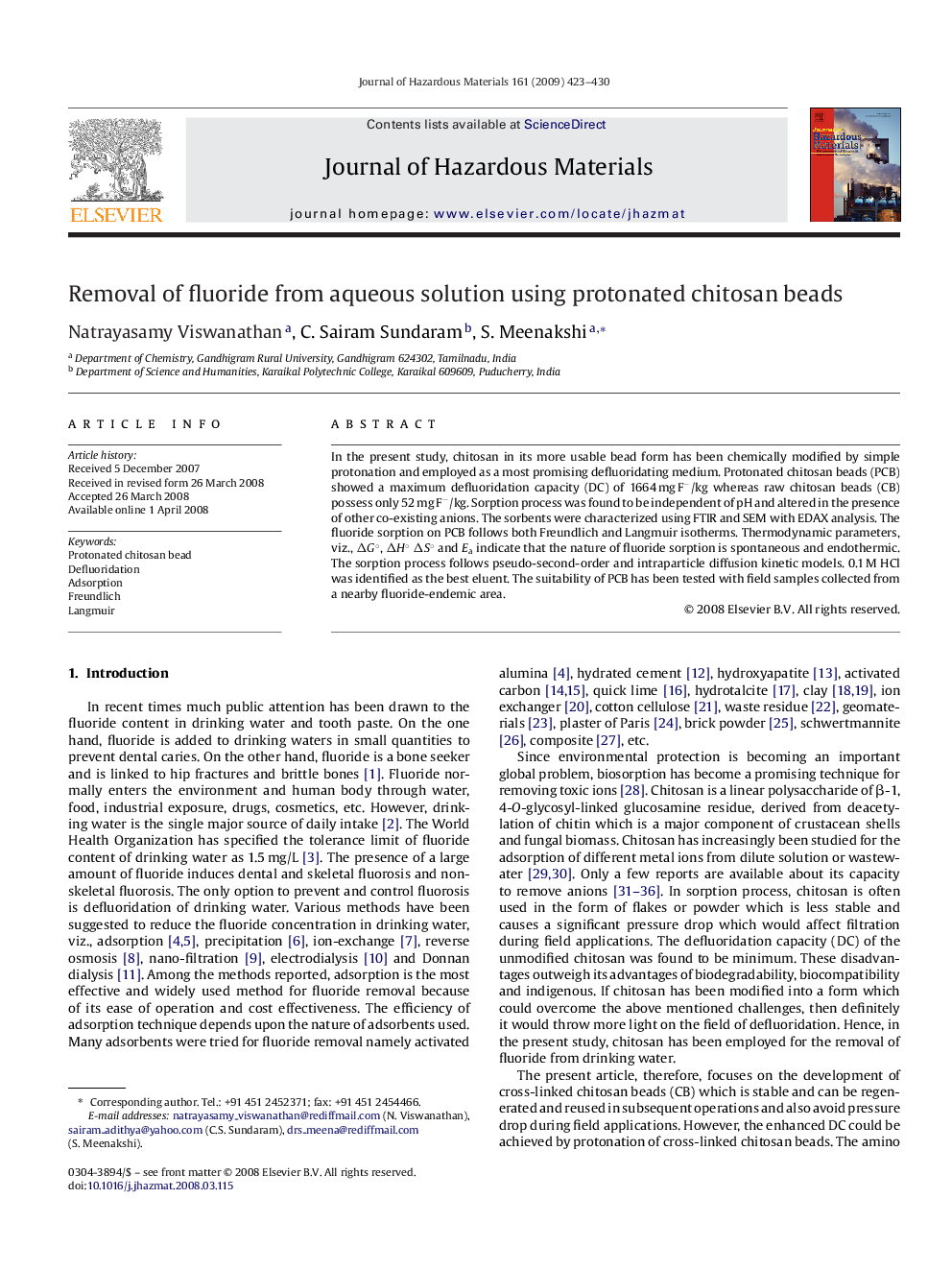| Article ID | Journal | Published Year | Pages | File Type |
|---|---|---|---|---|
| 581513 | Journal of Hazardous Materials | 2009 | 8 Pages |
Abstract
In the present study, chitosan in its more usable bead form has been chemically modified by simple protonation and employed as a most promising defluoridating medium. Protonated chitosan beads (PCB) showed a maximum defluoridation capacity (DC) of 1664 mg Fâ/kg whereas raw chitosan beads (CB) possess only 52 mg Fâ/kg. Sorption process was found to be independent of pH and altered in the presence of other co-existing anions. The sorbents were characterized using FTIR and SEM with EDAX analysis. The fluoride sorption on PCB follows both Freundlich and Langmuir isotherms. Thermodynamic parameters, viz., ÎG°, ÎH° ÎS° and Ea indicate that the nature of fluoride sorption is spontaneous and endothermic. The sorption process follows pseudo-second-order and intraparticle diffusion kinetic models. 0.1 M HCl was identified as the best eluent. The suitability of PCB has been tested with field samples collected from a nearby fluoride-endemic area.
Related Topics
Physical Sciences and Engineering
Chemical Engineering
Chemical Health and Safety
Authors
Natrayasamy Viswanathan, C. Sairam Sundaram, S. Meenakshi,
